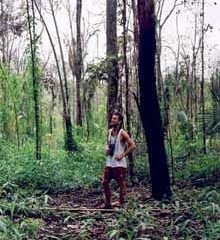Ecology, The Environment and Conservation
This complex theme deals primarily with interactions between organisms and the environmental factors that impact them, but to a greater extent between individual inanimate environmental factors.
innovations-report offers informative reports and articles on topics such as climate protection, landscape conservation, ecological systems, wildlife and nature parks and ecosystem efficiency and balance.

UCI study offers blueprint for pinpointing sources of beach water pollution
Innovative tests trigger clean up efforts at popular California beach
A UC Irvine-led study has proved instrumental for significantly improving the quality of beach water at a popular California tourist destination. The same study also provides the blueprint for assisting similar beachside communities with an innovative approach for pinpointing the causes of water pollution.
The research was headed by UCI environmental engineer Stanley Grant and USC microbiologist Jed Fuhrman

Endangered Northern Right Whales Exposed to Paralytic Shellfish Poisoning
With fewer than 300 northern right whales remaining, the seriously endangered species may face yet another obstacle to recovery. The right whale is regularly exposed to the neurotoxins responsible for paralytic shellfish poisoning (PSP) through feeding on contaminated zooplankton. These toxins could affect respiratory capabilities, feeding behavior, and ultimately the reproduction condition of the whale population.
In the current issue of the journal Harmful Algae, a team of scientists, led

Polar bear headed for extinction, says University of Alberta scientist
Unless the pace of global warming is abated, polar bears could disappear within 100 years, says a University of Alberta expert in Arctic ecosystems.
While it has been known for some time that the polar bear is in trouble, new research shows that Arctic ice–the polar bear’s primary habitat–is melting much faster than scientists had believed, says U of A biologist Dr. Andrew Derocher.
“The climate predictions coming out are showing massive changes in sea-ice distribution,” sa

Two global pollutants work to offset each other, according to Colorado study
University of Colorado at Boulder researchers have found, ironically, that two pollutants – carbon dioxide and hydrocarbons emitted from agricultural forest trees – offset each other somewhat in mitigating air quality problems.
Carbon dioxide, believed by scientists to be a major factor in greenhouse warming, has been shown to reduce “agriforest” emissions of hydrocarbons that contribute to ground-based ozone pollution, according to CU-Boulder doctoral candidate Todd Rosenstiel of the envir

Amazon wildfires contribute to carbon problem
More trees are dying following forest fires in the Amazon than was previously thought, according to new research from the University of East Anglia (UEA).
Trees that initially appear to survive fires, such as those caused by El Niño, are in fact dying two to three years later, increasing carbon emissions and causing further loss of Amazonian vegetation.
Dr Barlow of UEA’s School of Environmental Sciences found that many of the large, thicker-barked trees that survive up to two years fol

Study employs backyard scientists to document global warming impact
The flora and fauna are sending signals about the impact of global warming – a message that is being heard in backyards around the world.
A study in the Jan. 2 edition of the British science journal Nature synthesized data from 143 scientific papers to examine whether a signal, or “fingerprint,” of climate change can be found in how animals and plants have reacted to increasing temperatures.
Among their findings: In the temperate zone, the researchers estimate that, for spe